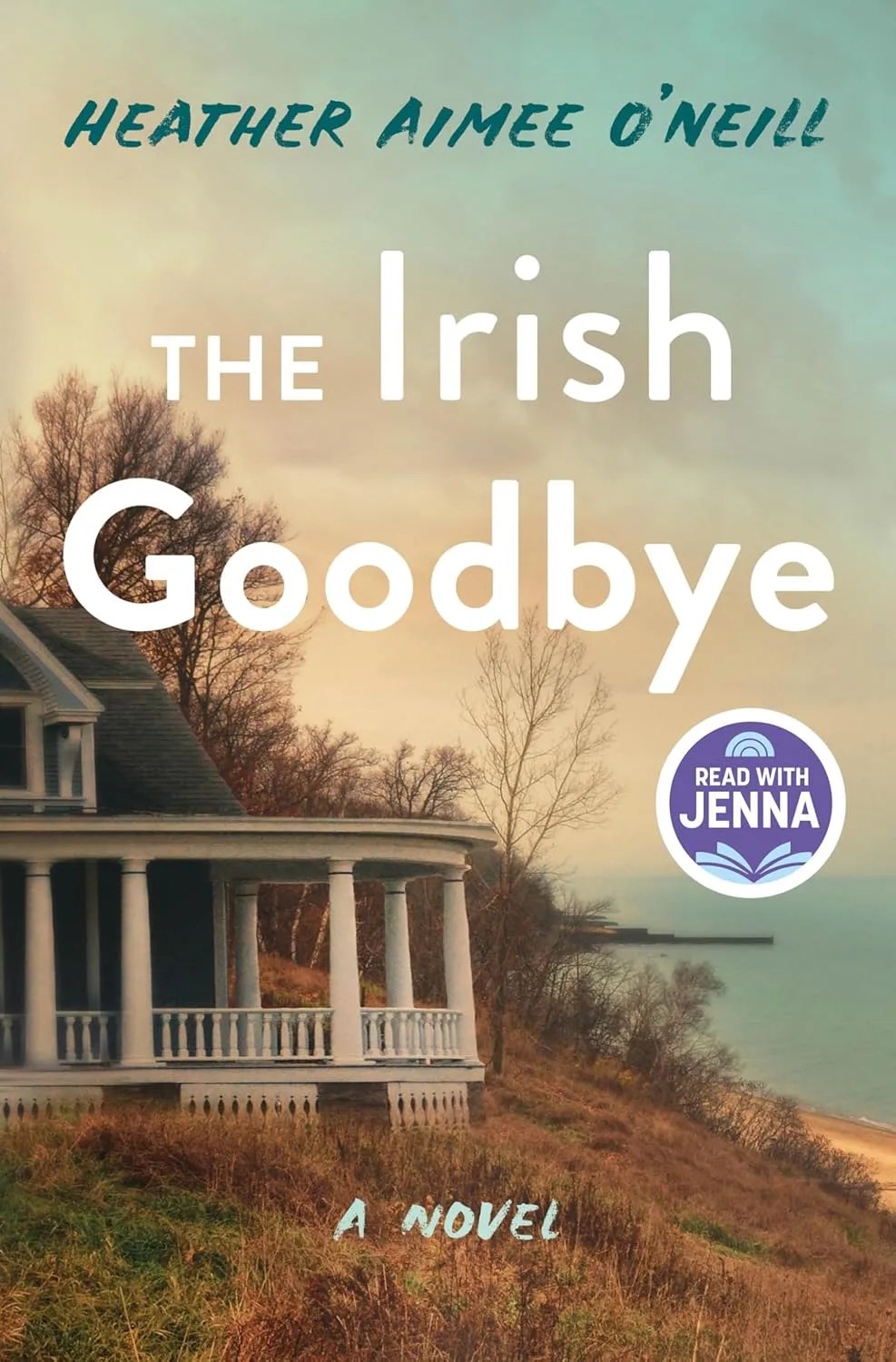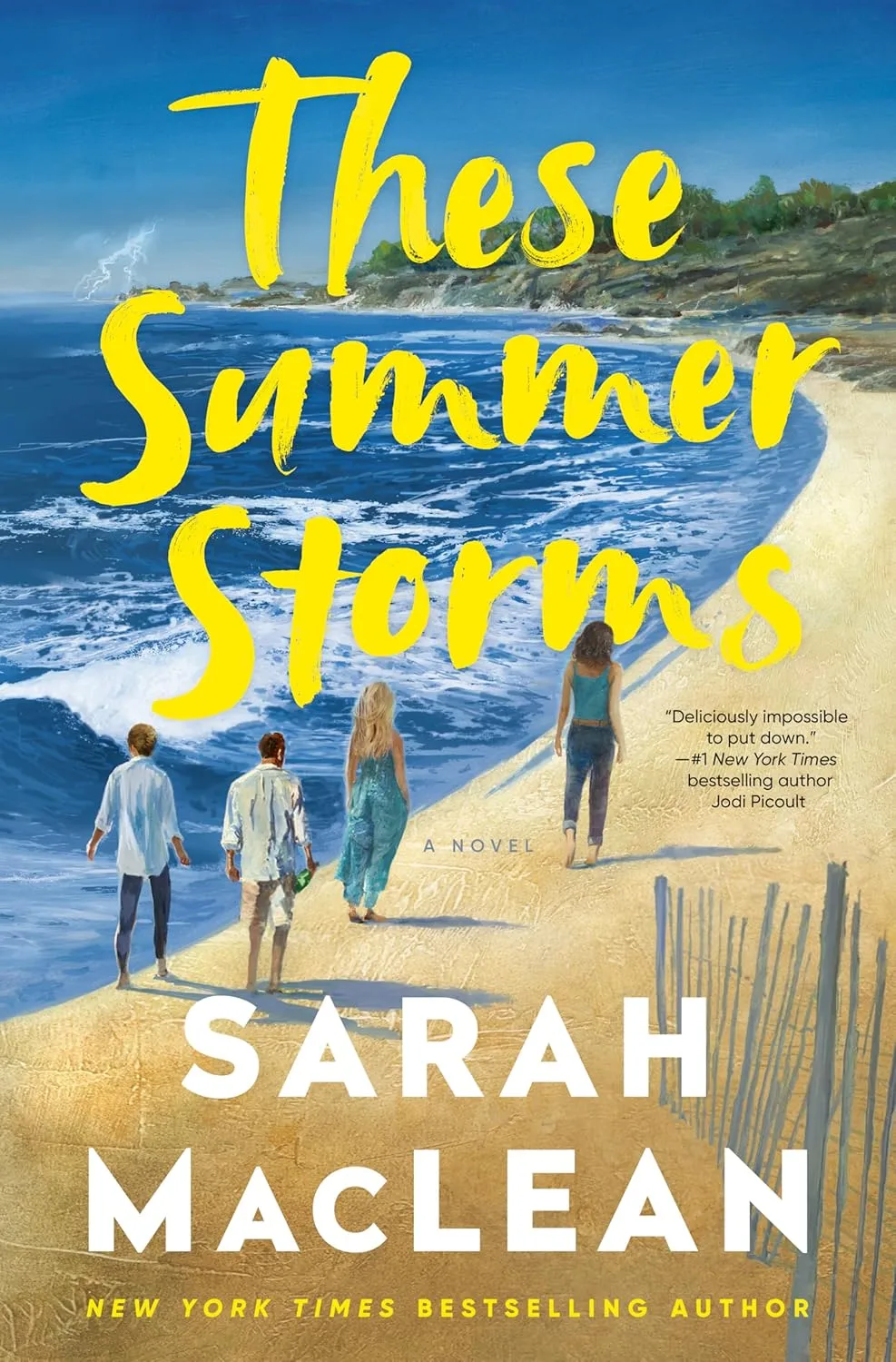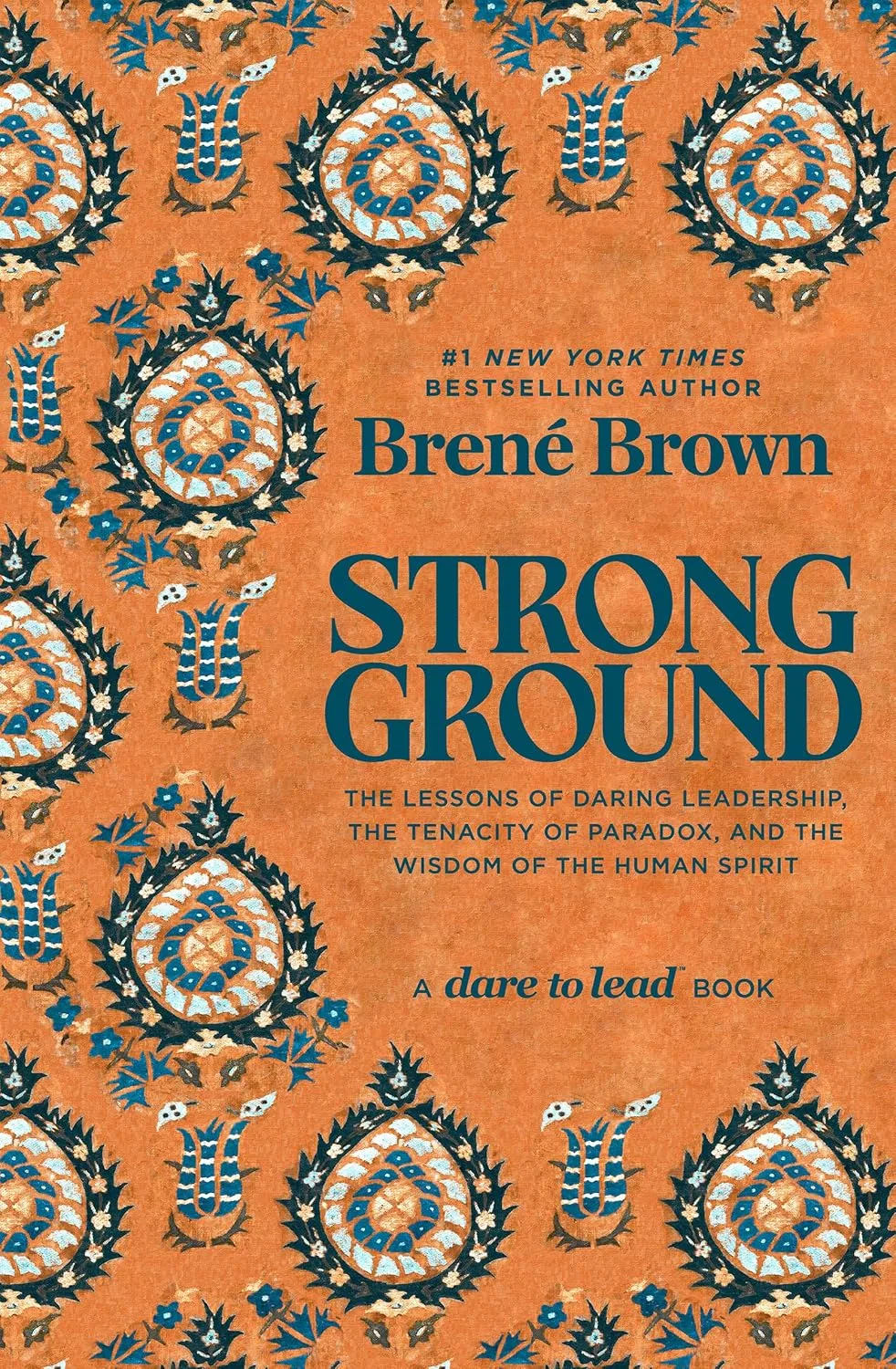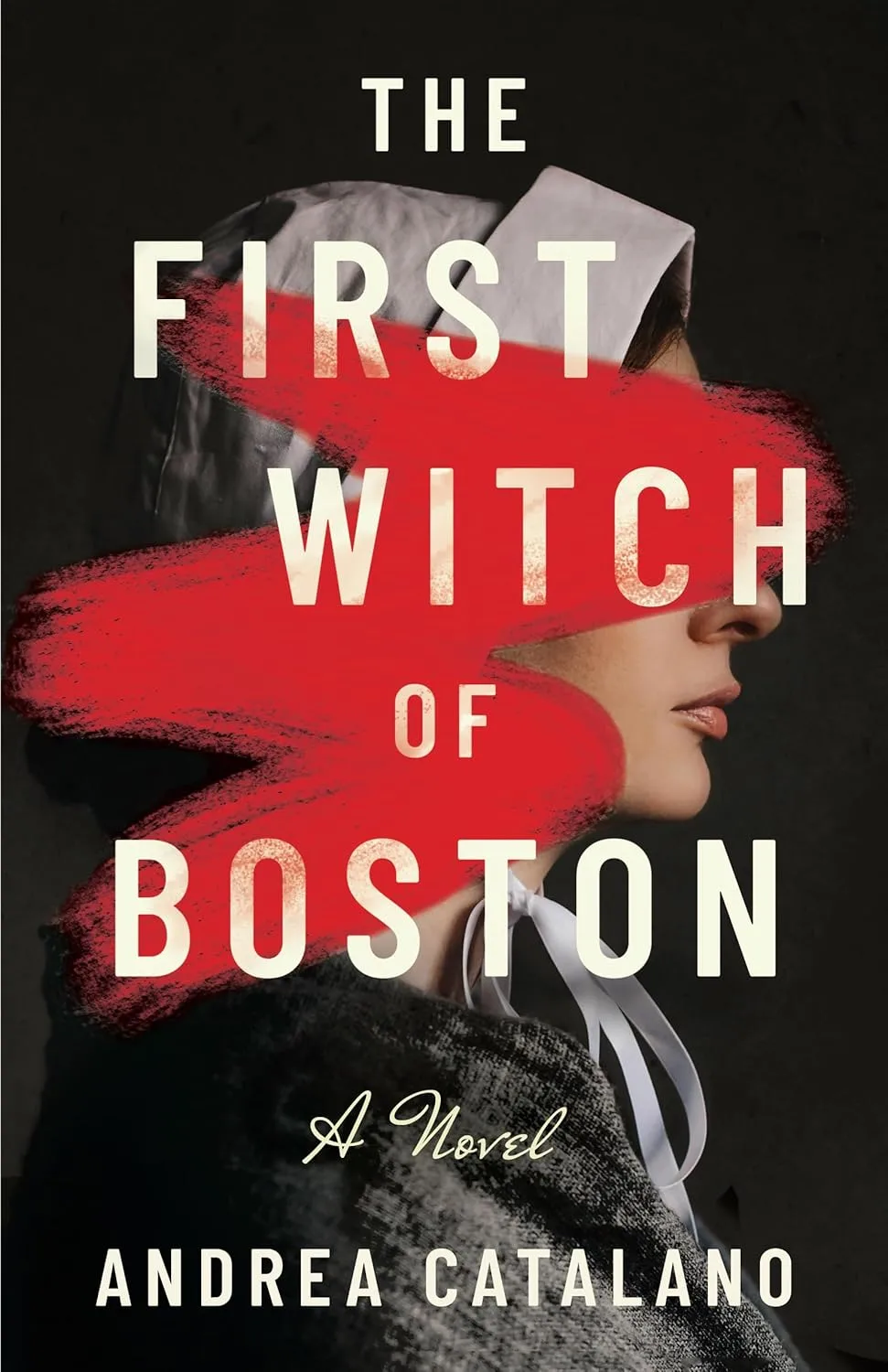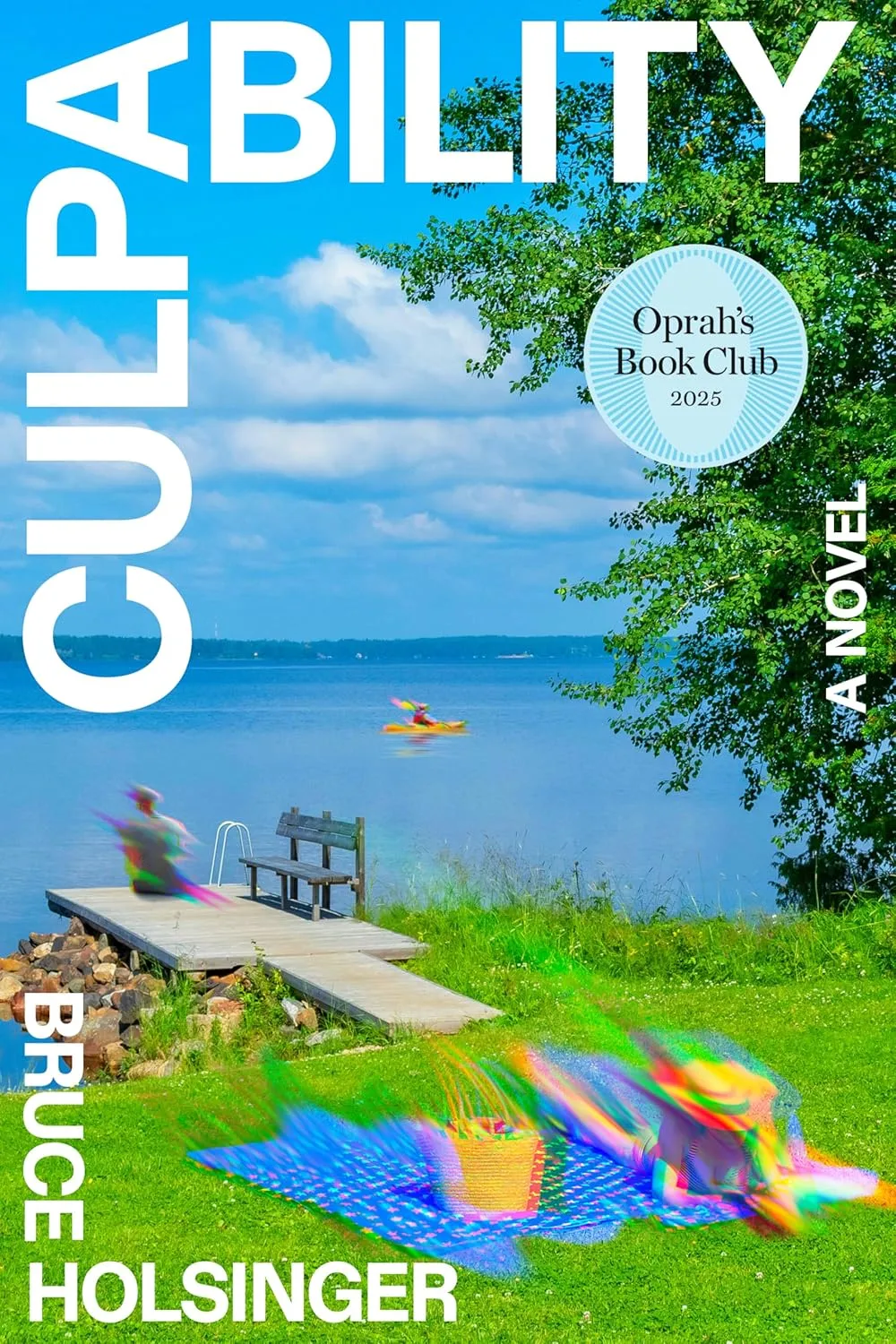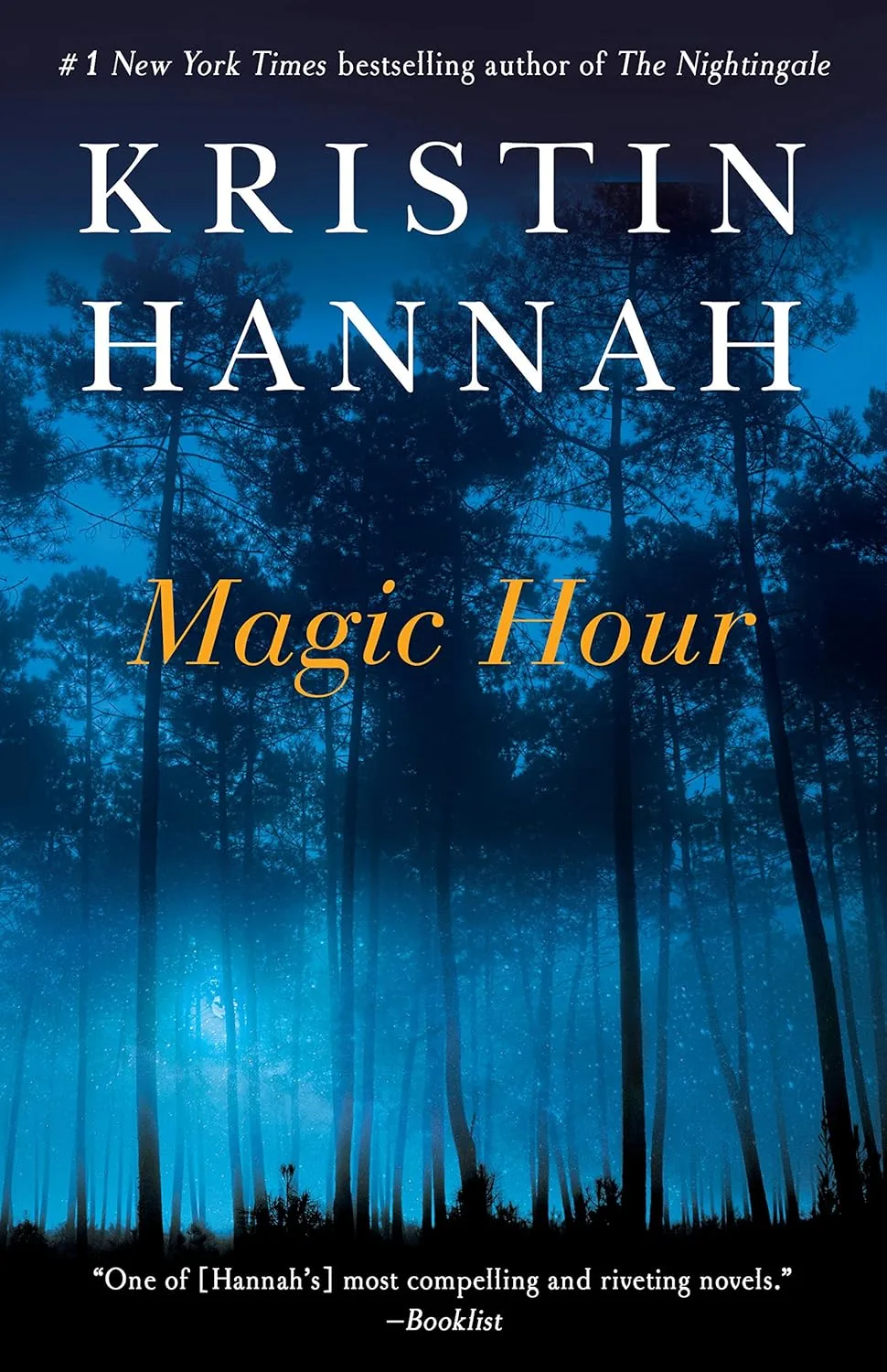Overview
The Irish Goodbye is a poignant debut novel by poet and editor Heather Aimee O’Neill that explores the complex dynamics of a fractured family reunited for the first time in years. Set over a Thanksgiving weekend on Long Island’s eastern shore, the story follows three adult sisters—Cait, Alice, and Maggie—as they return to their childhood home, each carrying devastating secrets while grappling with the shared trauma that changed their lives forever. Twenty-five years after a fatal boating accident involving their brother Topher, which led to his eventual suicide, the Ryan sisters must confront buried truths, unresolved grief, and the question of whether forgiveness can mend what tragedy has torn apart.
Key Takeaways
| Aspect | Details |
|---|---|
| Genre | Contemporary Fiction, Family Drama |
| Setting | Long Island’s East End, Thanksgiving weekend (present day) |
| Publication | September 30, 2025 (St. Martin’s Press) |
| Main Focus | Three sisters confronting shared family trauma and personal secrets |
| Core Conflict | How to heal as a family when individual grief has kept everyone apart |
| Narrative Style | Multiple POV (alternating between the three sisters) |
| Honors | Today Show #ReadwithJenna Book Club Pick |
| Target Audience | Fans of J. Courtney Sullivan, Mary Beth Keane, and family sagas |
Book Structure
The novel alternates between the perspectives of the three Ryan sisters over the course of a long Thanksgiving weekend, with flashbacks revealing the tragedy that shaped their family.
Opening: The Gathering
The three sisters return to their parents’ Long Island home for the first time in years, each bringing their current struggles and unspoken resentments. The anticipation builds as old wounds resurface simply by being in the same space.
The Past Unveiled
Through carefully woven flashbacks, readers learn about the boating accident that killed their brother Topher’s friend twenty-five years ago, the devastating lawsuit that nearly bankrupted the family, and Topher’s subsequent depression and suicide. Each sister carries a different piece of this shared trauma.
Secrets and Revelations
- Cait’s Hidden Guilt: The eldest sister harbors a secret about her role in the boating accident that no one else knows. She reconnects with Topher’s best friend—who is also the brother of the boy who died in the accident.
- Alice’s Crossroads: The middle sister, who has sacrificed her own dreams to care for aging parents, faces a career-threatening situation that could destroy her marriage.
- Maggie’s Coming Out: The youngest sister finally brings home the woman she loves to meet their devoutly Catholic mother for the first time.
The Breaking Point
When Cait makes an unexpected invitation to Thanksgiving dinner, old tensions erupt and new truths surface, threatening to destroy the fragile bonds holding the family together.
Resolution and Healing
The sisters must decide whether to continue the pattern of leaving without saying goodbye—the titular “Irish Goodbye”—or stay and do the difficult work of forgiveness, both of themselves and each other.
About the Author
Heather Aimee O’Neill is a poet, editor, and debut novelist. Her previous works include the poetry collections “Memory Future” and “Obliterations.” As both a poet and editor, O’Neill brings a lyrical sensibility and keen eye for emotional nuance to her fiction. The Irish Goodbye represents her first foray into the novel form, where she explores themes of family, grief, and the complexities of sisterhood with the same attention to language and emotion that characterizes her poetry.
Her background in poetry is evident in the novel’s beautiful prose and its ability to capture profound emotion in seemingly small moments. O’Neill’s understanding of how trauma reverberates through families and relationships gives the novel its emotional authenticity.
Why This Book Resonates
Universal Family Dynamics: While the Ryan family’s specific tragedy is unique, the tensions, resentments, and unspoken hurts that accumulate over years will feel familiar to anyone who has navigated complex family relationships.
The Weight of Secrets: Each sister’s hidden burden creates a powerful exploration of how secrets—even those kept to protect others—can poison relationships. The novel asks whether confession is always healing or sometimes just another form of harm.
Grief Without a Roadmap: The Ryans have never learned to grieve together. Instead, each member has carried their loss in isolation, creating a family united by tragedy but divided by their inability to share their pain. This resonates in a culture that often expects people to “move on” rather than move through grief.
The Meaning of the Title: An “Irish Goodbye” means leaving without announcement or farewell—slipping away to avoid difficult conversations. The novel explores how this pattern of avoidance, when repeated over years, can leave families estranged even when they share the same space.
Chosen vs. Given Family: Through Maggie’s storyline of bringing her girlfriend home, the novel explores how we create new families while negotiating the expectations of the ones we’re born into.
Second Chances: At its heart, this is a story about whether families can rebuild after devastation, whether forgiveness is possible, and what it takes to truly show up for the people you love.
Ideal Audience
Perfect for readers who enjoy:
- Character-driven family dramas with emotional depth
- Stories about sisters and sibling relationships
- Novels exploring grief, trauma, and healing
- Multi-generational family sagas
- Thanksgiving or holiday weekend settings
- Books about secrets and their consequences
- Contemporary women’s fiction with literary sensibilities
- Authors like J. Courtney Sullivan (Saints for All Occasions), Mary Beth Keane (Ask Again, Yes), Tracey Lange, Ann Patchett, and Celeste Ng
Also appeals to:
- Readers who appreciate realistic dialogue and family dynamics
- Those interested in LGBTQ+ storylines handled with sensitivity
- Fans of #ReadwithJenna Book Club selections
- Anyone who has experienced complicated family relationships
- Readers who enjoy novels set in specific, well-drawn locations (Long Island)
Memorable Quotes
From Jenna Bush Hager (Today Show’s #ReadwithJenna): “Shows how the ripples of loss and grief can shape even our closest relationships.”
From Jenny Jackson, New York Times bestselling author of Pineapple Street: “A sparkling debut, The Irish Goodbye is a rich, compassionate novel about sisterhood, marriage, grief, and forgiveness.”
From early reviews: “The family saga we all need—utterly un-put downable, beautifully drawn, thrilling and heartfelt at once and totally not to be missed. Heather Aimee O’Neill has arrived with gorgeous skills and a keen eye for what drives families apart, and brings them together, too.”
Central Themes
| Theme | Exploration in the Novel |
|---|---|
| Shared Trauma, Individual Grief | Each sister experienced the same tragedies but carries them differently; the novel explores how collective loss can paradoxically isolate family members |
| The Weight of Secrets | What we hide to protect others vs. what we hide to protect ourselves; how secrets corrode intimacy and trust over time |
| Forgiveness and Self-Forgiveness | Can you forgive someone who hurt you unintentionally? Can you forgive yourself for surviving when someone else didn’t? |
| Sisterhood | The unique bond between sisters—competitive and supportive, intimate and distant, enduring despite everything |
| The Irish Goodbye | Patterns of avoidance and emotional unavailability; the cost of leaving without saying what needs to be said |
| Caretaker Burden | Alice’s story explores how one family member often becomes the default caretaker, sacrificing their own life while others move away |
| Coming Out and Acceptance | Maggie’s journey bringing her girlfriend home examines generational differences, religious upbringing, and the courage to live authentically |
| Economic Pressure | The lawsuit’s financial devastation and the burden of maintaining a deteriorating family home reflect real economic anxieties |
| Guilt and Responsibility | Who is to blame when accidents happen? How do we live with our role in tragedy? |
| Resurrection of the Past | Old flames, buried truths, and the way the past refuses to stay buried when you return home |
Character Profiles
Cait Ryan – The Eldest Sister
Lives in London with her twin children, Poppy and Augustus. Recently divorced and unexpectedly unemployed, she’s rebuilding her life while hiding the most devastating secret of all: her role in the boating accident that killed her brother’s friend. When she reconnects with Topher’s best friend—the brother of the boy who died—she must confront whether confession brings healing or just more pain.
Character Arc: From running away (both literally to London and figuratively from the truth) to facing what she’s avoided for twenty-five years.
Alice Ryan – The Middle Sister (The Caretaker)
The sister who stayed. Alice lives in their hometown, manages her aging parents’ affairs, raises her own children, and has put her dreams of a career as an interior designer on hold indefinitely. Just when she’s ready to restart her professional life, unexpected news threatens both her marriage and her carefully maintained balance.
Character Arc: From dutiful sacrifice to learning she can’t pour from an empty cup; from resentment toward her sisters for leaving to understanding why they had to go.
Maggie Ryan – The Youngest Sister
A high school English teacher still processing the end of a secret affair with a trustee’s wife, Maggie has finally found real love and is bringing her girlfriend home for the first time. Raised by a devoutly Catholic Irish mother, she must navigate the fear of rejection while claiming her authentic identity.
Character Arc: From hiding (her sexuality, her relationships, her true self) to choosing visibility despite the risk of losing her mother’s love.
Topher Ryan – The Absent Center
Though deceased, Topher’s presence haunts every page. The beloved only son whose life was destroyed by a single moment, whose depression no one knew how to address, whose suicide left a hole in the family that no one has figured out how to acknowledge, let alone heal.
The Parents
Aging and dealing with their own grief, the Ryan parents represent the previous generation’s way of handling trauma: silence, stoicism, and moving forward without looking back.
Setting and Atmosphere
Long Island’s East End: The Ryan family home sits on the eastern shore of Long Island, an area known for its beauty but also its prohibitively high cost of living and property taxes. The deteriorating house becomes a metaphor for the family itself—once beautiful, now requiring repairs no one can afford, both financially and emotionally. The Thanksgiving setting adds pressure, as holidays force proximity and pretense when distance might feel safer.
The Thanksgiving Pressure Cooker: The compressed timeline of a holiday weekend creates narrative tension. Everyone is stuck together, old roles reassert themselves, and there’s nowhere to hide.
Writing Style and Narrative Technique
O’Neill alternates between the three sisters’ perspectives, allowing readers intimate access to each woman’s internal struggles while highlighting how differently they perceive the same events. The structure creates dramatic irony—readers know what each sister is hiding, making their interactions crackle with unspoken tension.
The author’s background as a poet is evident in her lyrical prose and ability to capture profound emotion in small, observed details. The pacing is deliberate, building tension steadily toward inevitable confrontations while allowing space for reflection and character development.
Critical Reception
The novel has been praised for its realistic portrayal of family dynamics and its emotionally resonant exploration of grief and healing. Selected as a Today Show #ReadwithJenna Book Club Pick, it has resonated with readers who appreciate character-driven stories about flawed, relatable people doing their best with impossible situations.
Reviewers have particularly noted:
- The authenticity of the sister relationships
- The skillful handling of multiple timelines
- The way O’Neill allows characters to be both sympathetic and frustrating
- The earned emotional payoffs
- The beautiful prose that elevates the family drama genre
Comparative Reviews: Critics have compared it favorably to J. Courtney Sullivan’s Saints for All Occasions and Mary Beth Keane’s Ask Again, Yes for its nuanced exploration of Irish-American families and intergenerational trauma.
Discussion Questions
- What does the “Irish Goodbye” represent beyond just leaving a party without saying farewell? How do different characters practice this emotional avoidance?
- Should Cait reveal her secret about the boating accident? Would confession help or hurt at this point?
- How does each sister’s position in the birth order shape her response to the family trauma?
- Is Alice justified in her resentment toward her sisters? What does the novel say about caretaker burden and family obligation?
- How does the author handle Maggie’s coming-out story? What makes it more complex than just acceptance or rejection?
- What role does the physical house play in the story? Should they keep it or let it go?
- How does grief isolate vs. connect the Ryan family members?
- Are some secrets better kept? When does protecting someone become lying to them?
- How does the lawsuit and financial strain complicate the family’s grief process?
- What does the novel suggest about whether families can truly heal from tragedy?
FAQ
Q: Is this a sad book? A: It’s emotionally complex. While it deals with heavy themes—suicide, grief, family dysfunction—it’s ultimately about connection and healing. There are moments of warmth, humor, and hope alongside the pain.
Q: Do I need to be Irish or Irish-American to relate to this story? A: Not at all. While Irish Catholic family dynamics play a role (particularly around Maggie’s storyline), the themes of family trauma, sibling relationships, and unspoken resentments are universal.
Q: Is there a happy ending? A: Without spoiling, it’s a realistic ending. The novel doesn’t promise that all wounds heal or all problems resolve, but it does suggest that showing up—really showing up—for family is the first step.
Q: How is the LGBTQ+ representation? A: Maggie’s story is handled with sensitivity and nuance. It’s not just about coming out but about the complexity of wanting your family’s acceptance while also preparing to live without it if necessary.
Q: Is this literary fiction or commercial fiction? A: It straddles both. The prose is beautiful and the character development deep (literary), but it’s also accessible, plot-driven, and emotionally engaging (commercial). Think “book club fiction” at its best.
Q: Are the secrets revealed gradually or all at once? A: O’Neill skillfully parcels out revelations throughout the novel, with careful timing that builds tension while allowing for character growth.
Q: Should I read this during the holidays? A: If your family gatherings are complicated, this might hit too close to home—or might feel validating. If your holidays are peaceful, it’s a fascinating look at what others experience. Many readers might prefer to save it for after the holidays!
Final Thoughts
The Irish Goodbye is a stunning debut that establishes Heather Aimee O’Neill as a significant new voice in contemporary fiction. She has crafted a novel that is both intimately specific—these particular sisters with their particular wounds—and universally resonant. Anyone who has struggled with family expectations, unspoken resentments, or the question of whether honesty is always the best policy will find themselves reflected in these pages.
What makes the novel exceptional is O’Neill’s refusal to offer easy answers. She doesn’t tell us whether Cait should confess her secret, whether Alice is right to resent her sisters, or whether the family can truly heal. Instead, she shows us real people making difficult choices, sometimes getting it wrong, always trying their best.
The Ryan sisters are not always likable. They make selfish decisions, avoid hard conversations, and hurt each other despite their love. But they feel achingly real precisely because of these flaws. O’Neill understands that families are complicated—that you can love someone desperately and still struggle to be in the same room with them, that shared history can both bind and wound.
For readers who have experienced loss, who understand that grief doesn’t follow a timeline, who know the specific pain of family members who became strangers, this novel will feel like both a mirror and a balm. For those fortunate enough not to have lived through such complexity, it offers a deeply empathetic window into how tragedy reshapes families.
The Irish Goodbye reminds us that sometimes the bravest thing we can do is stay—to resist the urge to slip away unnoticed and instead remain present for the difficult conversations, the uncomfortable truths, and the slow, uncertain work of healing. It’s a novel about showing up, not just physically but emotionally, for the messy, imperfect people who share our history and, if we’re lucky, our future.
Rating Consensus: ★★★★ (4/5 stars based on early reviews)
Audiobook Note
The audiobook, narrated by Kristen Sieh, has received particular praise for her handling of multiple accents (London, Irish, Long Island) and her ability to give each sister a distinct voice. Reviewers note that Sieh’s soft, lilting Irish accent is particularly beautiful and that her performance enhances the emotional resonance of the story.
Links
- More Summaries
- Publisher: St. Martin’s Press (Macmillan)
- Purchase: Available at Amazon, Barnes & Noble, Books-A-Million
- Audiobook: Macmillan Audio
- Book Club Resources: Today Show #ReadwithJenna
- Similar Reads:

